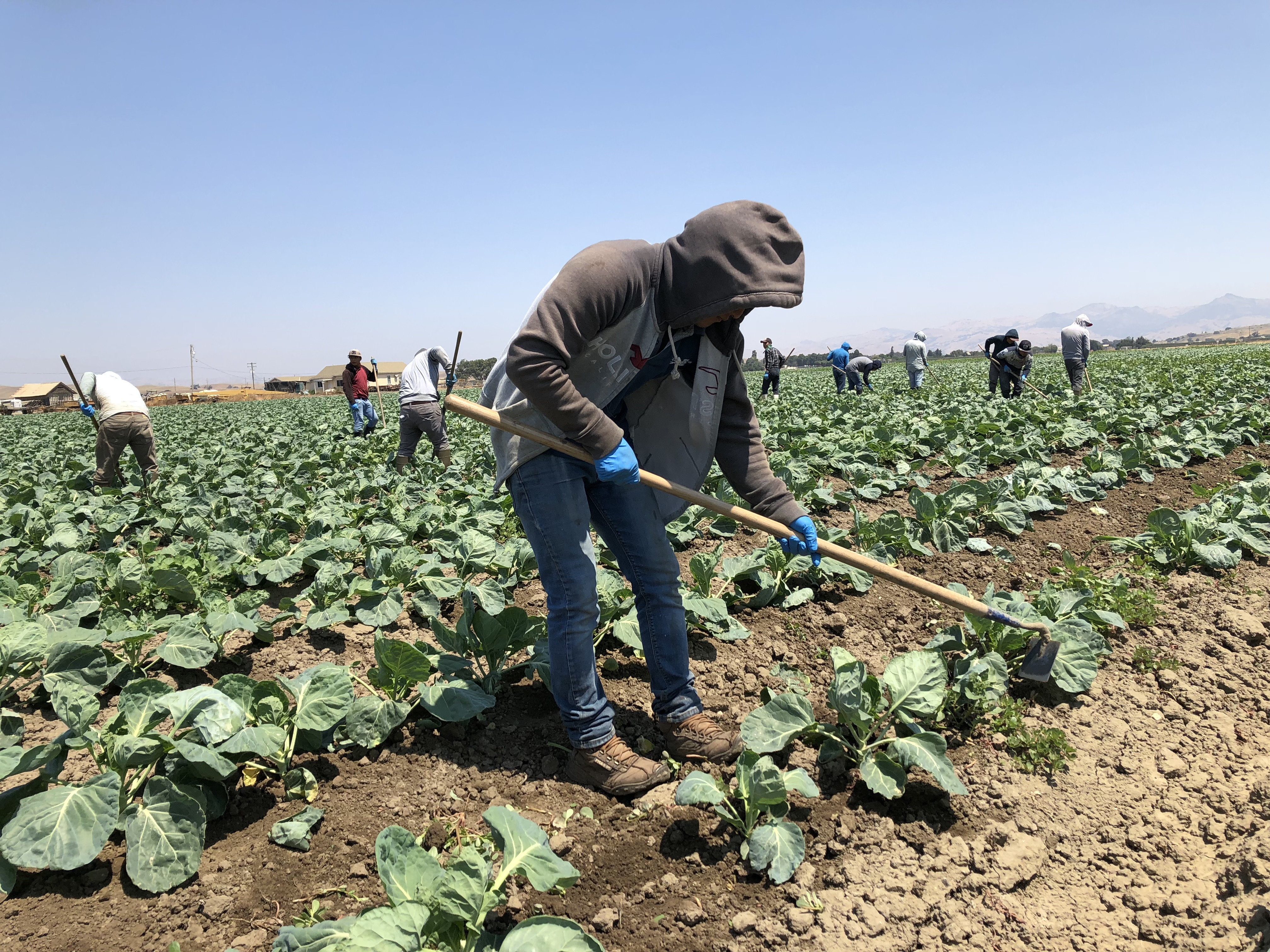Farmworkers at Risk for Obesity, High Blood Pressure, Say UC Researchers
By Pam Kan-Rice, UCANR
Better Access to Health Care and Safety Net Programs Would Help
Farmworkers are a crucial link in our food supply chain, a fact that came sharply into focus during the early days of the COVID-19 pandemic. To keep these essential workers healthy, there is a need for more data on farmworkers’ health. A new study published by University of California scientists looks beyond work-related health concerns such as heat and pesticide exposure to the general health of the people who help plant, nurture and harvest food in California.
“The study findings confirm the high chronic-disease burden in a workforce that is considered essential but lacks adequate access to health care and safety net programs,” said Susana Matias, lead author and UC Cooperative Extension specialist in the UC Berkeley Department of Nutritional Sciences and Toxicology. “This is a concern because California needs a healthy farmworker workforce. These workers are key to putting food on our tables and should be protected and supported as any other California worker.”
After reading the study, an advocate for women farmworkers said she sees opportunities to enhance farmworkers’ health by improving their working conditions by enacting policy governing work permits; childcare; pest management; unemployment benefits; access to healthy and affordable food; and safe, affordable housing.
To see a broader perspective of farmworker health, Matias analyzed data from three studies by Marc Schenker, UC Davis physician and professor emeritus. Schenker’s studies examined farmworkers’ general health, occupational injuries and important causes of illness and disease. Causes or so-called “social determinants” of disease include low income, food insecurity, undocumented immigration status, and poor housing conditions.
“Those social determinants are particularly negative and impact disease outcomes in the farmworker population,” Schenker said. “Too often farmworkers don’t have the benefits of other working populations, including adequate health care. It is hoped that recognition of this situation can lead to addressing these deficiencies and an improvement in farmworker health.”
Irene de Barraicua, director of operations and communications for Lideres Campesinas, said the study relates to much of the work her organization does advocating for women farmworkers.
“The article and studies emphasize findings that call for higher salaries, better working conditions, more worker rights and access to healthcare,” de Barraicua said. “From these findings, we can also gather that the health of farmworkers is impacted by various stress factors related to poverty, excruciating and unsafe work conditions, and lack of or costly childcare to name a few.”
Matias found that female farmworkers were at higher risk of obesity and larger waist circumference, while male farmworkers were at higher risk of high blood pressure and high total cholesterol.
“These differences in chronic health risks between farmworker men and women suggests that clinical and public health responses might need to be sex-specific,” said Matias, who is also co-associate faculty director at the Berkeley Food Institute.
The studies were conducted with farmworkers in Mendota, Oxnard and Watsonville. Matias would like to expand the scope to assess the health of farmworkers statewide.
“Our study is not representative of other regions of the state,” Matias said. “A representative survey is urgently needed in California to better identify and quantify the health problems in this population, and to provide the services needed by these essential workers.”
“The article ‘The Chronic Disease Burden Among Latino Farmworkers in California’ clearly brings to the forefront very important sociodemographic and socioeconomic ‘gaps’ unique to farmworkers, an essential segment of our population and workforce,” said de Barraicua of Lideres Campesinas.
“We need to enact policy that facilitates access to health care including mental health services; easily accessible, free rural and mobile clinics; telehealth services, essentially unrestricted healthcare coverage for all,” de Barraicua said, adding that trusted community health workers who know the farmworkers’ culture and speak their language are needed.
She also noted the growing population of indigenous Mexican farmworkers and face greater challenges related to language access, limited education and immigration status.
The article, co-authored by Matias, Schenker, UC Berkeley postdoctoral researcher Caitlin French and student Alexander Gomez-Lara, is published in Frontiers in Public Health.
















